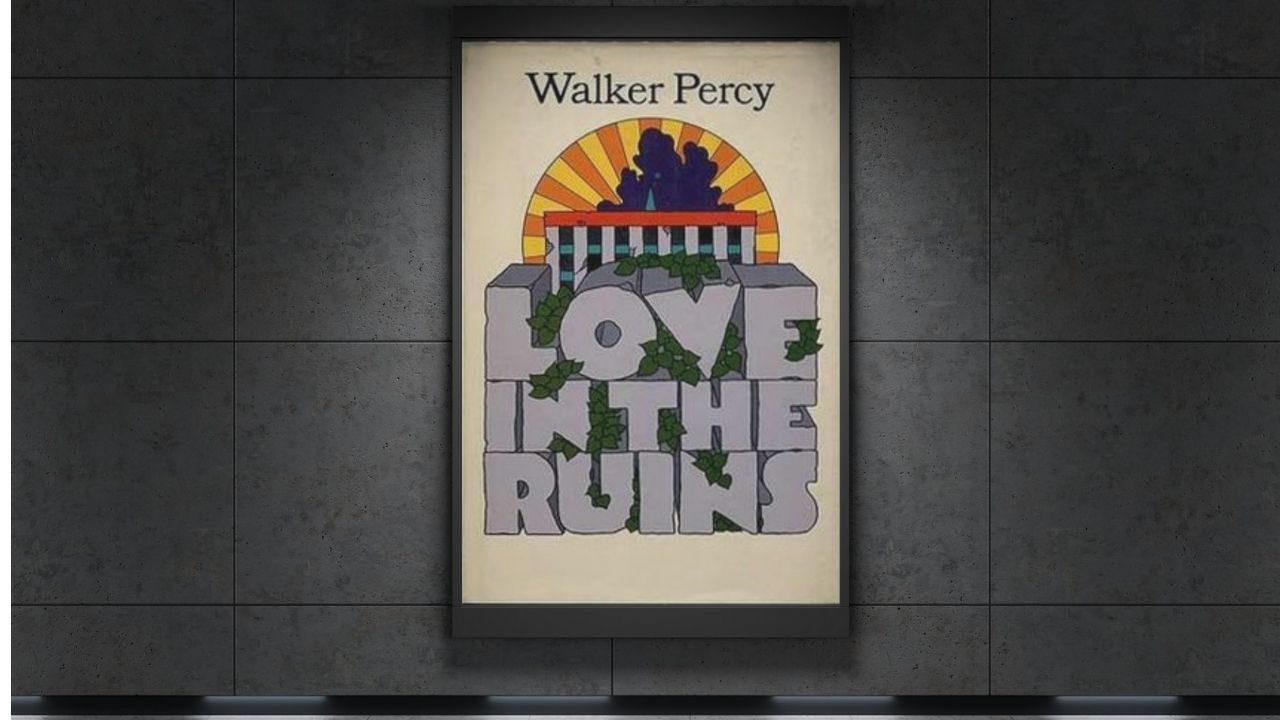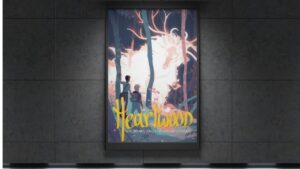Queer fantasy and dystopian fiction may seem like an unlikely pairing at first glance—but when they meet, the result is often electric, emotionally resonant, and powerfully transformative. These genres share a common thread: both explore the boundaries of identity, challenge oppressive systems, and imagine what survival, love, and freedom can look like on the fringes of society.
In dystopian settings, where the world has already fallen apart or is on the verge of collapse, queer love stories shine with even more intensity. These narratives often place characters in environments where the stakes are high—be it survival, resistance, or self-discovery. Against the backdrop of ruin, queer relationships become acts of rebellion, tenderness becomes political, and magic can symbolize both trauma and hope.
This guide is for readers seeking unforgettable queer love stories woven into the fabric of dystopian fantasy. We’ll explore why this subgenre resonates so deeply, spotlight essential reads that blend queer representation with richly imagined, broken worlds, and offer thoughtful tips for engaging with emotionally heavy but rewarding stories. Whether you’re new to queer dystopian fantasy or a longtime fan, this list is designed to help you find powerful, affirming tales of love in the ruins.
Why Queer Fantasy Thrives in Dystopian Worlds
At its core, queer fantasy set in dystopian worlds offers more than just escapism—it becomes a space for radical exploration of freedom, identity, and resistance. These stories don’t just imagine new worlds; they reimagine what it means to live, love, and exist authentically in spaces that often try to erase difference.
In dystopian narratives, where systems have broken down or turned oppressive, queer characters often find themselves in direct confrontation with rigid norms and authoritarian control. This struggle parallels real-world experiences of marginalization, making the journey toward self-discovery and chosen family especially meaningful. These characters don’t just survive—they resist, rebuild, and redefine the rules of their world.
The collapse of society in these settings also acts as a metaphor for queer liberation. When traditional structures fall apart, there’s room for something new to grow—something truer, queerer, and more just. Whether it’s through magic, rebellion, or quiet acts of defiance, characters often reclaim agency in ways that reflect the real-world fight for LGBTQIA+ rights and recognition.
Dystopian backdrops naturally heighten emotional stakes. Love—especially queer love—feels more urgent and powerful when set against violence, scarcity, and uncertainty. Intimate connections become lifelines. Whether it’s an intense slow-burn romance or a fierce platonic bond, these relationships carry the weight of survival, hope, and the possibility of a better future.
In short, dystopian queer fantasy thrives because it creates space for characters to imagine themselves beyond binaries, beyond control, and beyond the ruins of the old world. It’s not just about surviving the end—it’s about rewriting what comes after.
Hallmarks of Queer Love in the Ruins
Queer love stories set in dystopian worlds often share a collection of powerful, recurring themes that define and enrich the genre. These “hallmarks” give shape to narratives that are both emotionally charged and deeply reflective of real-life queer experiences—especially those rooted in survival, resilience, and transformation.
Found Family, Survival, and Resilience
In worlds where institutions have collapsed and biological families may reject or no longer exist, queer characters often form their own support systems—found families built on trust, mutual care, and solidarity. These connections become more than emotional anchors; they are essential for survival. Whether scavenging through ruined cities or navigating post-apocalyptic politics, these characters rely on each other to endure the harsh realities of their environment.
Survival in queer dystopian fantasy isn’t just physical—it’s emotional and psychological, too. These stories center characters who endure systemic erasure, isolation, and violence, and yet persist with grit and compassion. This resilience becomes a radical act in itself, especially when paired with joy and love.
Forbidden Love and the Defiance of Norms
Many queer dystopian tales are set in societies that rigidly control gender, sexuality, or relationships. In these environments, queer love often becomes a direct form of rebellion. Lovers may have to hide their bond, fight for their right to exist, or navigate a society that tries to define them by outdated or oppressive rules. The love that emerges under these conditions is fierce and defiant—an act of courage as much as affection.
These stories tap into the timeless narrative of star-crossed love, but with new depth. Queer characters challenge the expectations placed upon them and forge their own identities, often breaking cultural taboos or escaping violent systems. This pushback against imposed norms underscores the transformative power of queer desire and solidarity.
Magic, Rebellion, and the Fight for a Better World
Magic often plays a central role in queer dystopian fantasy, acting as a metaphor for inner strength, hidden potential, or collective resistance. In these stories, magic isn’t just a tool for escape—it’s a source of empowerment. Characters may discover magical abilities that align with their personal truths or use fantasy elements to resist control and spark change.
Likewise, rebellion is a core narrative driver. Whether it’s a grassroots uprising or a lone act of defiance, queer characters often lead or inspire resistance movements. Their love, identities, and very existence become catalysts for reshaping the broken world around them. These are not just stories of surviving dystopia—they are stories about imagining and building something better.
Must-Read Queer Fantasy Dystopias
If you’re looking for compelling stories where queer love blooms in crumbling worlds, these standout titles blend fantasy, dystopian settings, and deeply resonant queer narratives. Each book listed below offers a unique take on survival, identity, and connection in the face of ruin.
Gideon the Ninth by Tamsyn Muir
Set in a universe ruled by necromantic houses and ancient power struggles, Gideon the Ninth is equal parts gothic science fantasy, locked-room mystery, and slow-burn queer tension. The story follows Gideon Nav, a sardonic swordswoman, as she’s forced to team up with her lifelong nemesis, Harrowhark Nonagesimus—a necromancer with secrets of her own. The slow-building relationship between the two women unfolds in a setting full of skeletons, secrets, and twisted loyalties. With sharp humor and brutal stakes, Muir crafts a world where love and loyalty persist amid death and decay.
The Scapegracers by Hannah Abigail Clarke
This novel introduces Sideways Pike, a misfit teenage witch who finds unexpected friendship and power when she joins a group of popular girls. Set in a society that fears difference—especially magical, queer difference—the book explores what happens when young people fight back against systems that try to silence them. Queer identity, magic, and teen rebellion come together in a raw and empowering narrative. The found family element is strong, and the magic system is deeply tied to the characters’ identities and desires.
The Fever King by Victoria Lee
In a dystopian version of the United States, where magical abilities result from a deadly virus, The Fever King follows Noam Álvaro—a bisexual teen who survives the virus and gains technopathy. As he’s pulled into the world of political manipulation and national security, he must confront the cost of power and truth. The story features a morally gray cast, a simmering enemies-to-lovers relationship, and a layered exploration of trauma, immigration, and resistance. Lee’s world-building is tight, and the themes of identity and loyalty resonate strongly throughout.
An Unkindness of Ghosts by Rivers Solomon
Aster lives aboard the HSS Matilda, a generation ship structured by rigid social and racial hierarchies. This haunting space dystopia deals directly with themes of gender, neurodivergence, trauma, and survival. Aster’s queerness is not only part of her identity—it shapes how she navigates a world built to suppress her. Solomon’s writing is poetic and uncompromising, delivering a powerful critique of systemic injustice while offering deep emotional insight. It’s a challenging but essential read for those seeking queer speculative fiction that doesn’t shy away from hard truths.
This Is How You Lose the Time War by Amal El-Mohtar & Max Gladstone
Told through a series of lyrical letters exchanged between two rival time-traveling agents—Red and Blue—this novella is a beautifully poetic meditation on love, war, and identity. Though the world around them shifts through timelines and apocalyptic futures, the love that grows between these two women is intimate, clever, and transcendent. The dystopian backdrop adds urgency and poignancy to their romance, making every word and moment feel precious. It’s a genre-bending work that proves even in war-torn timelines, queer love can defy all odds.
Each of these books offers a distinct experience, but all center on queer characters finding connection, power, and meaning in places shaped by loss or oppression. They’re essential reads for anyone interested in the transformative potential of love in the ruins.
Tips for Navigating Heavy Themes
Queer fantasy stories set in dystopian worlds often deal with intense and emotionally challenging content. Themes like systemic oppression, violence, trauma, and survival are common—and while these narratives are powerful and necessary, they can also be emotionally taxing. Here are some thoughtful strategies to help readers engage with these stories in a way that’s both meaningful and manageable.
Content Warnings and Emotional Pacing
Before diving into any book, especially one with dystopian elements, take a moment to check for content warnings. Many authors and reviewers provide detailed notes about potentially triggering themes, including abuse, death, discrimination, or self-harm. Being informed allows you to approach the story with awareness and prepare emotionally.
It’s also okay to pace yourself. These stories often evoke strong emotional responses, and it’s completely valid to take breaks, sit with the material, or switch to lighter reads in between chapters or books. Reading at your own pace ensures that the impact of the story remains powerful without becoming overwhelming.
Finding Joy and Hope Amidst Dark Settings
While dystopian narratives often focus on ruin and loss, queer fantasy frequently finds ways to inject hope, beauty, and joy—even in the darkest moments. Found families, acts of kindness, loving relationships, and moments of self-acceptance are all forms of light in these stories. Seek out these emotional touchstones as reminders that resilience and connection are central to queer survival.
Celebrating small victories, intimate bonds, and personal agency within the story can make the reading experience not just bearable, but transformative. These glimpses of joy serve as resistance against the bleakness of the world and offer a blueprint for imagining better futures.
Why These Stories Matter—Especially for Marginalized Readers
Queer dystopian fantasies are more than just gripping tales—they’re spaces of representation, validation, and reflection. For many marginalized readers, these stories mirror real struggles with identity, societal rejection, and resistance against systems that seek to erase difference. Seeing queer characters not just survive but thrive, even in the ruins, offers affirmation and hope.
These books also challenge dominant narratives by centering those often pushed to the margins. They encourage empathy, inspire change, and invite all readers to imagine a world where love, identity, and freedom aren’t just tolerated—they’re celebrated.
By approaching these books with care and intention, readers can experience their full emotional depth while also protecting their own well-being. These are stories worth reading—precisely because they don’t flinch from the hard truths, but still insist on the possibility of joy, love, and transformation.
Bonus: Queer Dystopian Fantasies in Other Media
Queer dystopian fantasy isn’t limited to novels—its powerful themes and vibrant storytelling can be found across various media, including animated series, films, and graphic novels. These works expand the reach of the genre, making it accessible to a broader audience while offering visually rich and emotionally resonant narratives. If you’re looking to explore beyond the page, here are a few standout titles that blend dystopian elements with queer representation in compelling ways.
She-Ra and the Princesses of Power (Netflix Series)
This reboot of the classic 1980s series reimagines the world of Etheria with a bold queer lens. The show follows Adora, a former soldier of an authoritarian regime, who discovers her destiny as She-Ra and joins a rebellion against oppressive forces. Central to the series is the evolving relationship between Adora and Catra—one of the most celebrated queer slow-burn romances in modern animation. With themes of redemption, chosen family, and resistance, She-Ra delivers a heartfelt dystopian fantasy with genuine queer joy and complexity.
Steven Universe (Cartoon Network Series)
Though it leans more into science fantasy than pure dystopia, Steven Universe deserves mention for its groundbreaking queer representation and themes of healing, identity, and rebellion. The story centers on Steven, a half-human, half-alien boy who inherits his mother’s legacy as a Crystal Gem—a rebel group fighting to protect Earth from authoritarian control. The series features multiple queer characters, including non-binary and same-gender relationships, and handles emotional themes with warmth and nuance.
Nimona (Graphic Novel by ND Stevenson / Netflix Film)
Nimona tells the story of a shapeshifting young girl who becomes the sidekick to a villainous (but not entirely evil) knight in a futuristic medieval dystopia. Both the graphic novel and the animated film adaptation explore queer identity through metaphor, humor, and subversion of fantasy tropes. The character of Ballister Blackheart, his relationship with his former friend Ambrosius Goldenloin, and Nimona’s own ambiguous identity all highlight the fluidity and resilience found in queer narratives. Nimona is sharp, funny, and deeply moving.
These titles demonstrate how queer dystopian fantasy can thrive across genres and formats. Whether through animation, illustration, or film, they offer rich storytelling that resonates with themes of love, resistance, and the fight for a better world. They’re perfect companions to the books on this list—and ideal for readers looking to see queer stories come to life beyond the page.
Conclusion
Queer fantasy set in dystopian worlds does more than imagine survival in harsh conditions—it shows us how love, identity, and connection can thrive even in the most broken places. These stories offer readers a mirror and a map: a mirror that reflects real-life struggles with societal rejection and systemic oppression, and a map that guides us toward liberation, resilience, and chosen belonging.
In worlds where everything has fallen apart, queer love becomes an act of defiance. It insists that tenderness matters, that joy is possible, and that healing can begin even amid ruins. These narratives do not shy away from pain, but they remind us—again and again—that queer people endure, create, and rebuild.
Whether through books, graphic novels, or animated series, these stories allow marginalized readers to see themselves not just surviving, but transforming the world around them. They challenge dominant ideas of who gets to be a hero, who gets to love openly, and who gets to imagine a future. And in doing so, they provide something invaluable: hope.
Because even in dystopia, queer stories find the light—and that light is worth following.




